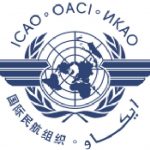Eurocontrol Data Snapshot No 12 – Aircraft across Europe being woken for the summer
An aircraft only generates revenue when it is flying, and generates only costs when it is on the ground. So airlines work to maximise the time in the air for these expensive assets.
In 2019, before the COVID pandemic, over the course of a typical week around 2,000 aircraft would remain parked at our airports. Aircraft are busier in summer, so there is a natural seasonality: the number inactive dropped to around 1,500 in July 2019. Inactive aircraft could be business aviation and private aircraft that do not necessarily fly every week, aircraft under maintenance or repair, or even recently retired aircraft. Already at the end of 2019, traffic growth was weakening and there was a slight increase in the number of inactive aircraft compared to the previous winter. In April 2020, when Europe went into lockdown, we saw the most dramatic change: 5,000 aircraft that were regularly flying every week joined those parked at our airports. At the peak, nearly 7,200 aircraft were “asleep”, occupying aprons, taxiways and even runways where necessary. For days, weeks and months depending on the case and the airline strategy. Some airlines even accelerated plans to retire part of their fleet, including icons like B747s or A380s. (Those flown to deserts away from Europe drop out of these statistics.)
The partial recovery of traffic in summer 2020 allowed some of these inactive aircraft to fly again and the total number of inactive aircraft decreased to a little over 3,500. But then the second, winter COVID wave in Europe brought many of these aircraft back to the ground, and although the Christmas season improved the situation, new travel restrictions with the third COVID wave in early 2021 pushed the number of inactive airframes back to almost 5,000.
As summer 2021 gets under way, the gentle recovery in flights is seeing more aircraft brought back into service: more than 800 since the start of May, leaving our airports with the fewest inactive aircraft since the pandemic began. A good sign for the summer ahead.




